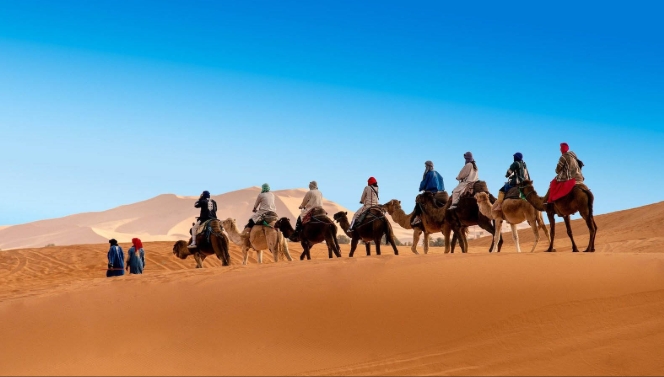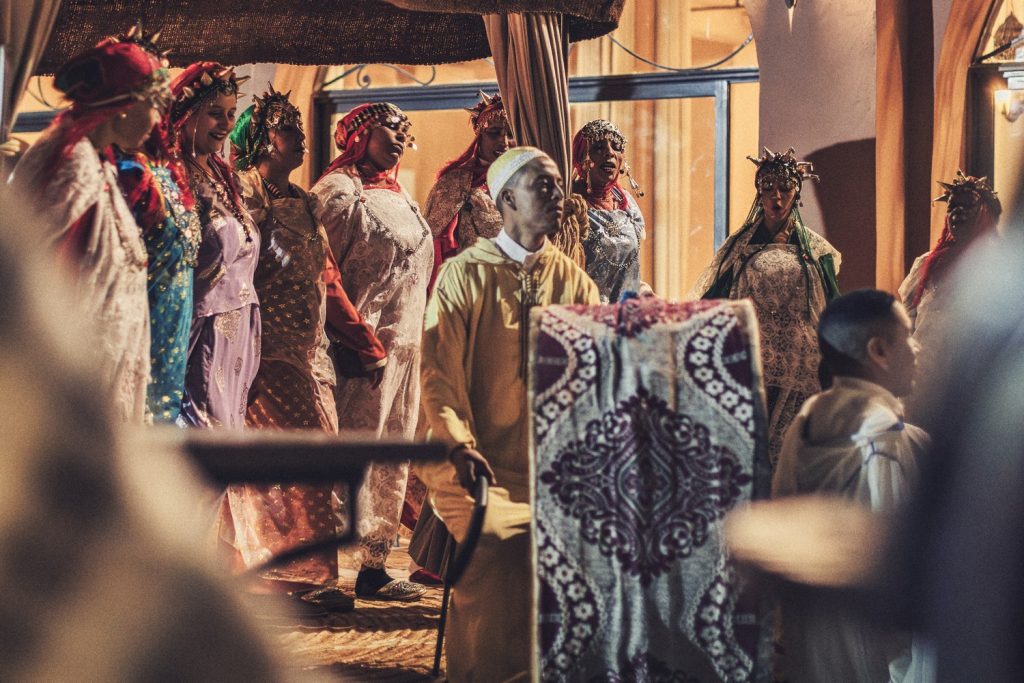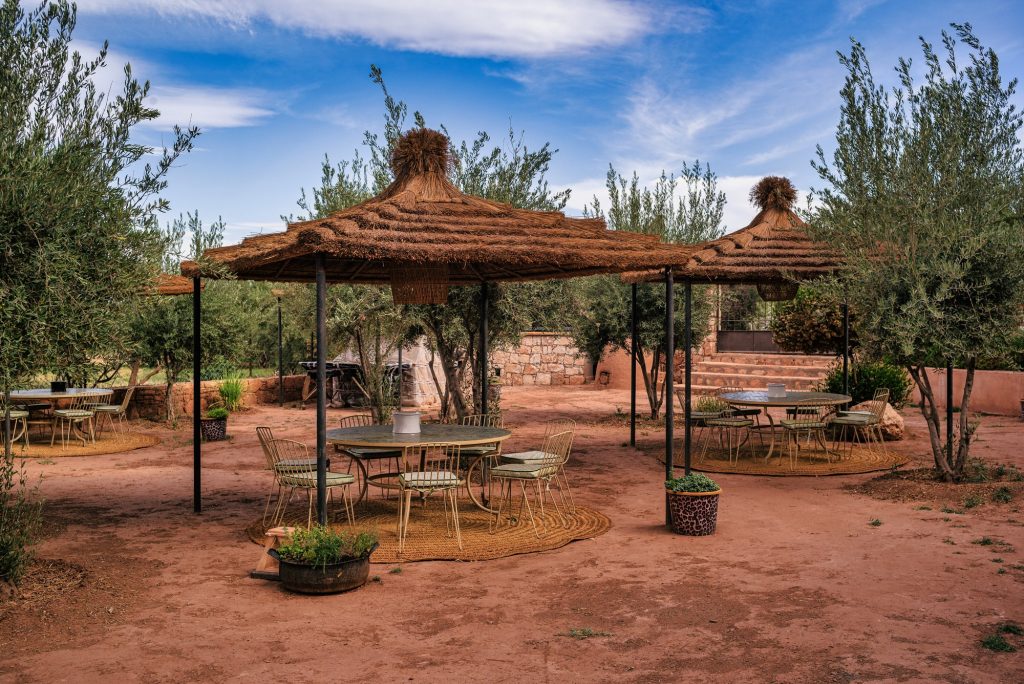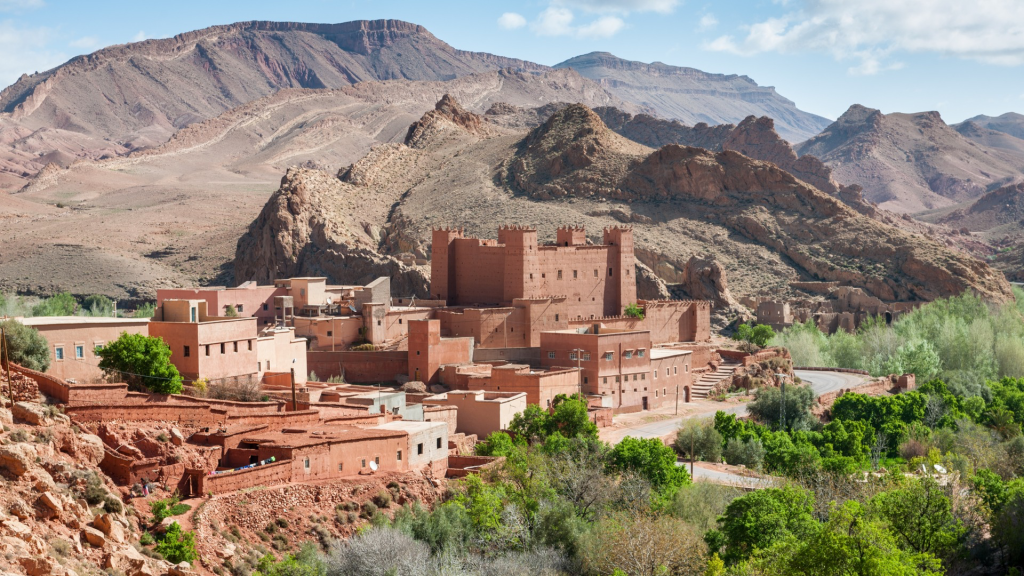TRANS-SAHARAN TRADE.
Morocco occupies a strategic geographical position due to its location in north-west Africa. The coasts of Morocco give access to both the Atlantic Ocean on the western Moroccan coast, and the Mediterranean Sea on the northern coast.
This geographical specificity very early placed Morocco at the heart of the development of maritime trade between the northern and southern shores of the Mediterranean from the Middle Ages onwards. It was during this period of history that the Moroccan crafts of Marrakech were born.
The goods, coming from West Africa, had first crossed the Sahara desert, before transiting on Moroccan soil via Marrakech. The geographical importance of Marrakech for Berber caravans made the ochre city a centre dedicated to trade, which greatly benefited Moroccan crafts.
Under the Almoravid Berbers in the 11th century, the commercial ports of Essaouira, Souira-Kédima and Safi received goods from the trans-Saharan trade via Aghmat-Ourika, and later via Marrakech. Trading ships would then set sail along the Moroccan coast, bound for the ports of Barcelona, Marseille or Genoa.
This is one of the routes of the ancient trade routes that crossed Morocco at the time. Trade across the Sahara, and then along the Moroccan tracks, was organised around gold and ivory from West Africa. This lucrative trade began under Roman occupation of the Maghreb, including Moroccan territory, and developed throughout the Middle Ages.
At the time, West Africa was of major economic interest to medieval Europe and the Maghreb because of its wealth. Gold and ivory came from regions such as present-day Ghana, Côte d'Ivoire, Mali and Niger.
These regions of West Africa could only be reached from the North by crossing the Sahara desert. Maritime trade in the Atlantic Ocean did not appear until the end of the 15th century.
In the early Middle Ages, the Sahara was an immense inaccessible area, totally unknown to Europeans. Only the tales of the Berbers brought Europe's knowledge of fabulous African kingdoms.
The existence of certain rich cities, such as Nouakchott, Sijilmassa or Timbuktu, fed the collective imagination in Western Europe. But no European had ever seen these legendary African cities for themselves. It was not until 1828 that a non-Muslim surveyed the Sahara, when René Caillé visited Timbuktu. But he was rather disappointed by the old Malian city. It had long since lost its former lustre.
Trade between sub-Saharan Africa and the Maghreb traditionally dates back to pre-Islamic times. This is an understatement, since the Sahara has always been a place of intense activity. The Berbers were familiar with the humid Sahara from time immemorial.
Their ancestors travelled through a wet, cultivated region with huge lakes.
With the slow process of global warming, which began more than 20,000 years ago, they have observed and experienced the gradual desertification of the Sahara. The Sahara, which became this arid and inhospitable region around 3,000 years ago, stood as a natural barrier to north-south trade. Crossing the Sahara Desert meant crossing dunes and arid landscapes over more than 2,000 kilometres.
The disappearance of the lakes of the Sahara, including the immense Lake Chad, of which only a tiny portion remains today, has had a direct impact on trade. Ancient communication routes have disappeared under the sand. Others have moved east or west. Ancestral trade between the Maghreb and Black Africa could even have come to a complete halt.
But this was without counting on the stubbornness and intrepid, adventurous character of the Berbers of the Sahara. Spread geographically across Morocco, Algeria, Mauritania, Mali and Niger, the nomadic Berbers of the western Sahara did not hesitate to pursue their routes across this sun-scorched desert.
Over a period spanning several millennia, the Berbers of the Sahara were the undisputed masters of the transport of goods from Black Africa to the Maghreb, and beyond to southern Europe. They were at the origin of the caravan routes used for trans-Saharan trade. This Berber monopoly lasted for more than 3,000 years. It only came to an end around the 15th century, with the advent of transatlantic maritime trade.
He is credited with the creation of the city of Marrakech in 1062, ideally positioned at a crossroads of trade routes from the Sahara. The Berber caravans came from Timbuktu, via Zagora, or from what is now Mauritania. They crossed the Sahara desert, climbed the slopes of the Haut-Atlas massif, skirted its rock-cut valleys and finally arrived on the Atlantic plains of Morocco.
A well-deserved rest awaited these brave Berber nomads in Aghmat-Ourika, dominated by the Almoravid Berbers. The Almoravids gradually abandoned Aghmat for its more prosperous neighbour. While the old city of Aghmat may have died out, leaving only ruins today, it was the birthplace of the famous ochre city and its mosque, the Koutoubia, almost 1,000 years ago. Marrakech, created on the initiative of the Almoravid Berbers, was the last city to emerge from trans-Saharan trade.








